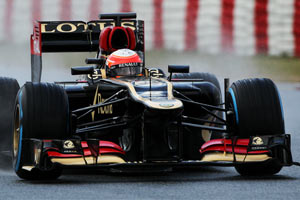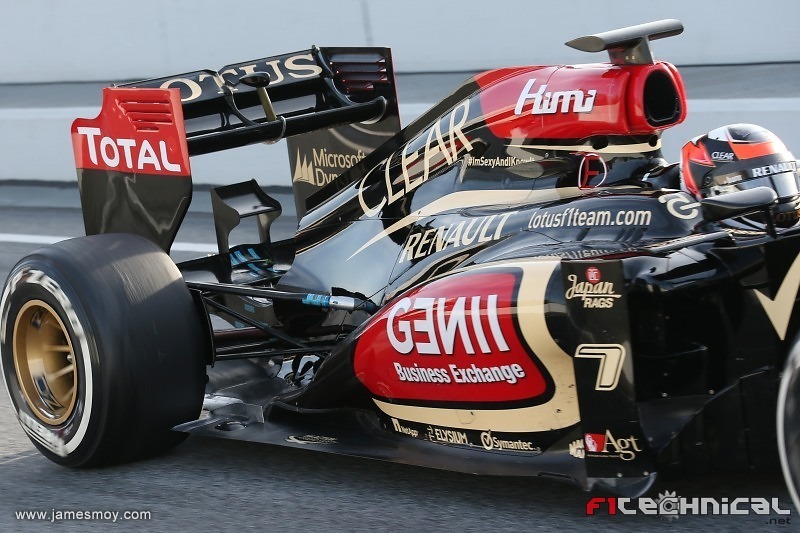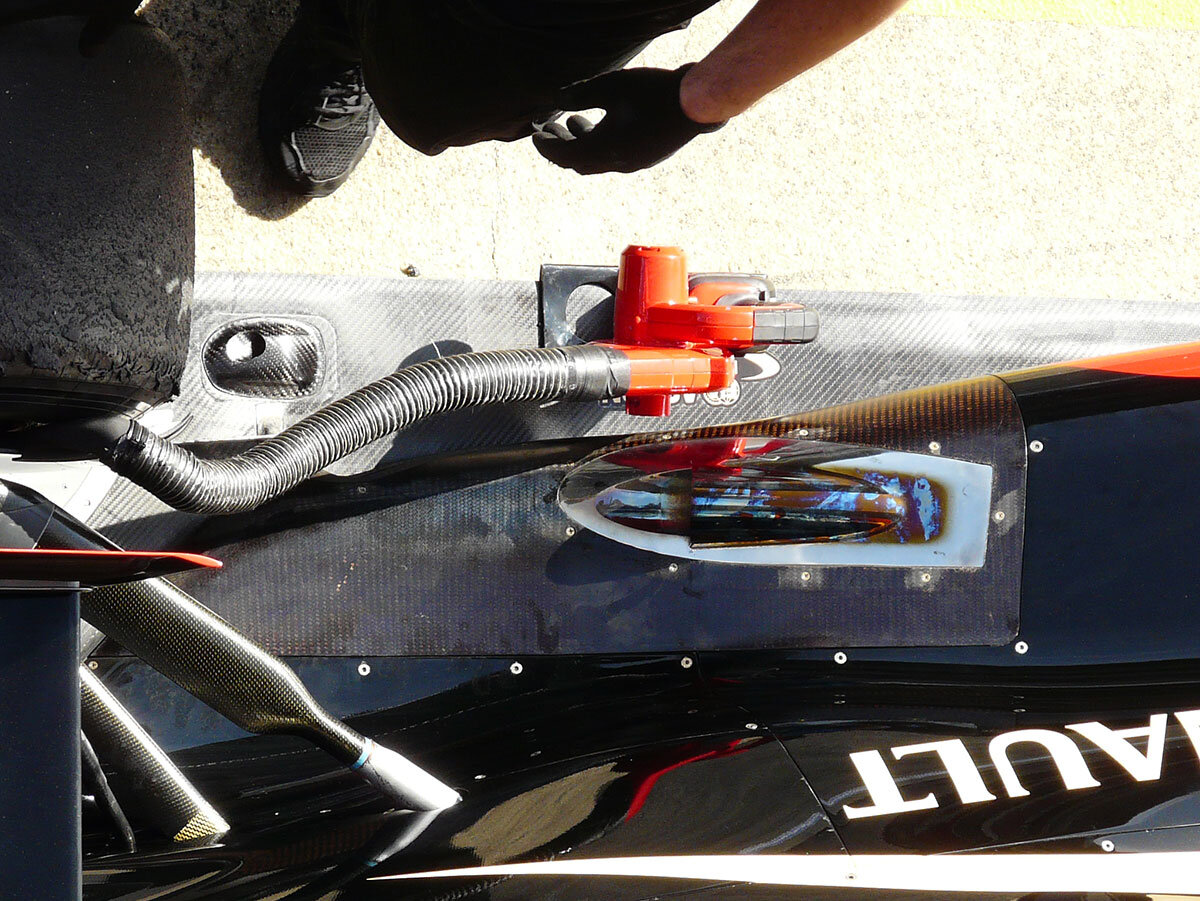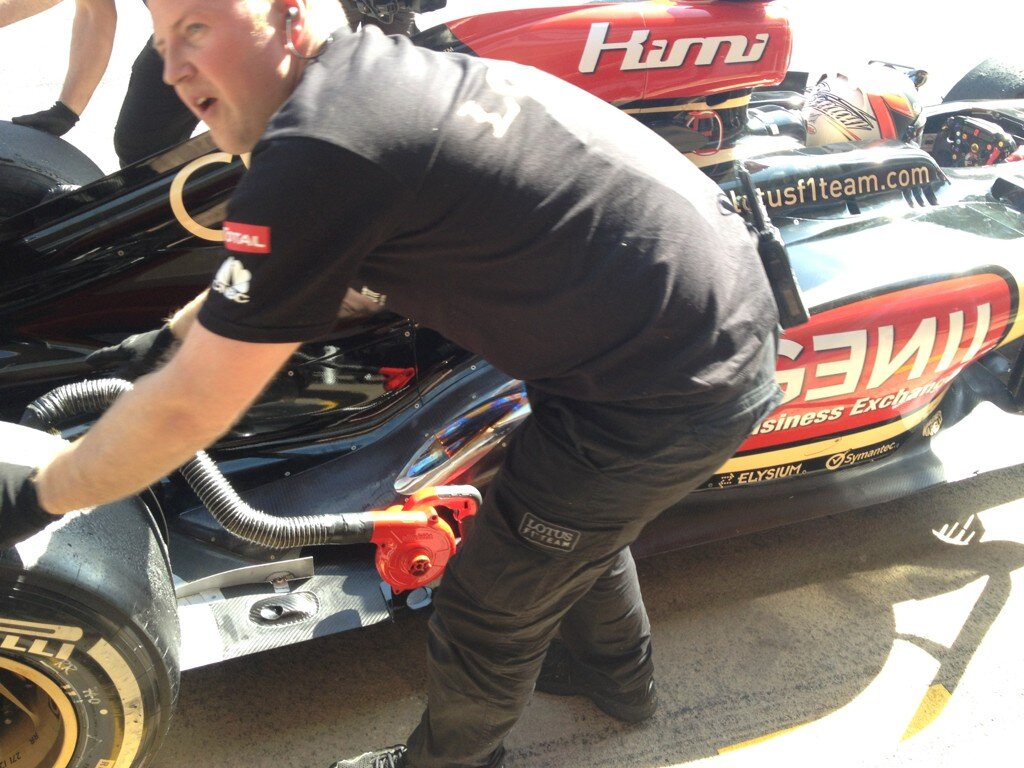The red strake is used to create a vortex that rolls from the outside (high pressure in front of the wing) to the inside, and then flows in line with the diffuser edge, close to the tire, providing a seal from tyre squirt. The exhaust blowing exactly there accelerates and strenghtens that vortex.
The vortex created from the strake is close to the footplate vortex, and is rotating in the opposite sense, Ideally you would like to blow the exhaust between these two voritces, in order to achieve the famous "sealing" effect
- Login or Register
No account yet? Sign up





